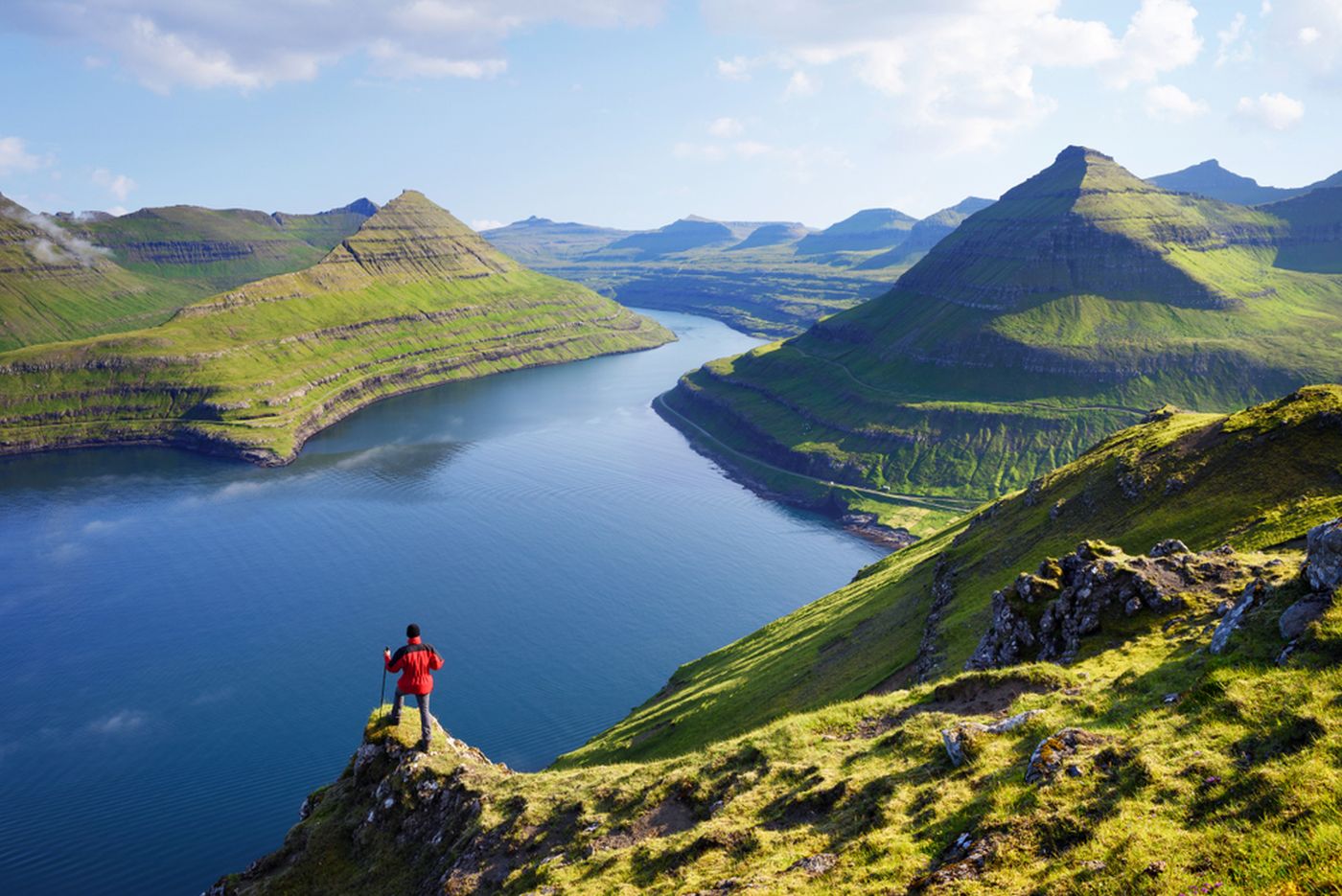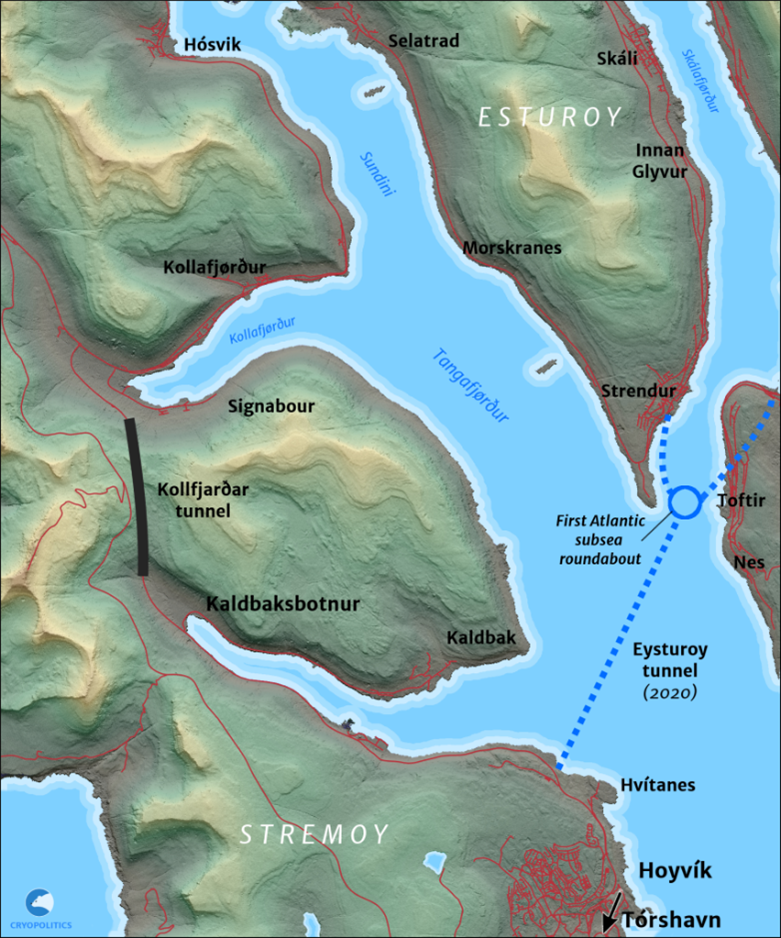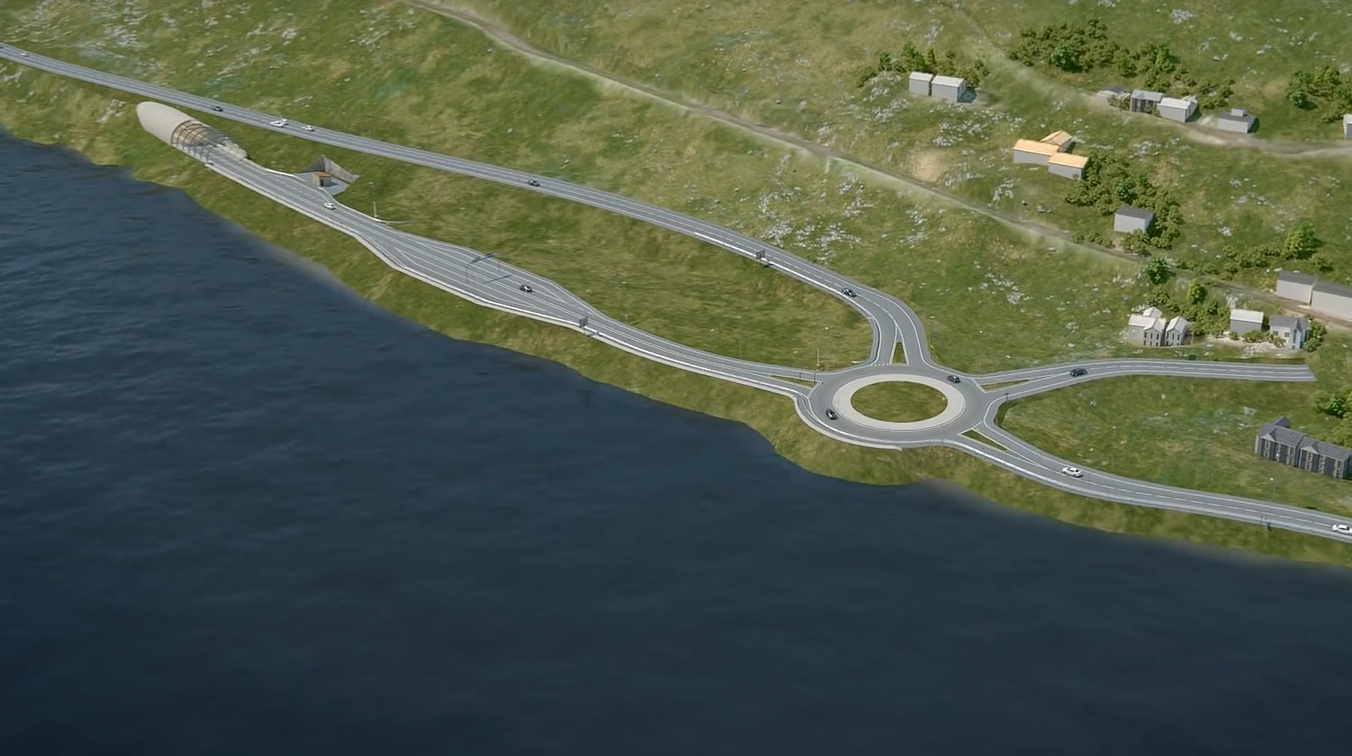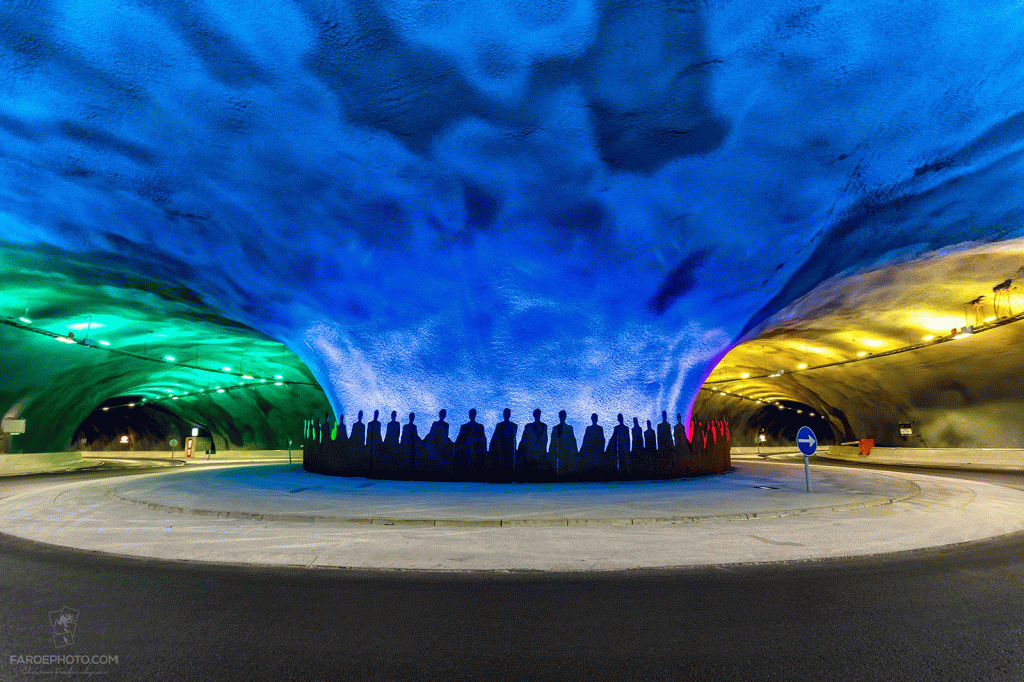The first undersea roundabout in the world
The Faroe Islands, a picturesque archipelago in the North Atlantic, are known for their beautiful nature and one unique attraction – the world’s first undersea roundabout. This magical circular roadabout plays a key role in shaping the environment and the ecosystem of the Faroe Islands. Named “Jellyfish”, the undersea roundabout resembles a large jellyfish or mushroom in shape.
The Faroe Islands are an archipelago made up of 18 mountainous islands in the Atlantic Ocean, north of Scotland, and 600 km west of Norway. The islands are a part of the Kingdom of Denmark, along with mainland Denmark and Greenland. Geologically speaking, the islands were formed during a period of high volcanic activity in the Paleogene. Volcanic deposits make up the ancient volcanic rocks that rise up over 900 m above the Atlantic Ocean and reach a depth of at least 3.5 km below sea level.

Before the citizens of the Faroe Islands built any underwater tunnels, they used difficult roads on the steep slopes and mountains and relied on ferries for travel. To make traveling easier, the first road tunnel in the Faroe Islands was opened in 1963, connecting two island cities. In order to encourage constant, better, and faster connections, the authorities of Faroe Islands started planning the construction of a network of underwater tunnels.
In 2014, they initiated a project to build an 11.2 km long tunnel network connecting the two largest islands in the archipelago. This marvel of engineering features the world’s first underwater roundabout, with an illuminated, sea-blue center section. The underwater roundabout is located at a depth of 72 meters below the Atlantic surface and connects three tunnel tubes and the islands of Streymoy and Eysturoy.

The roundabout resembles a large jellyfish, and at its center is a giant illuminated central pillar made of natural stone, which was left behind during the blasting constructions. Surrounding the pillar, there is an 80-meter-tall steel sculpture showing full-sized human figures holding hands in a circle. These figures symbolize the idea that we can achieve great things by working together and joining hands in collaboration.
The construction of this large engineering project began in 2017, when a team of engineers carried out the first drilling and blasting for the tunnel. All undersea tunnels on the Faroe Islands, including this one with its beautiful circular roadabout, were built using the drilling and blasting method. The traditional tunneling method involves drilling boreholes into the rock, followed by blasting to create space for the tunnel tube. After blasting, the excavated material is removed, and supports are constructed to ensure the stability of the structure.
During the construction of the tunnel and undersea roundabout, the engineers faced many different challenges related to drilling and blasting in the rock, mainly due to the presence of fault zones in the deepest parts of the area. The terrain posed a particular challenge, with large, uncontrolled water inflows, unique foundation conditions with changing rock conditions, substantial forces from the natural environment, and seismic activity. To successfully address these challenges, highly qualified engineers carried out a thorough assessment of the qualities of rock mass at the tunnel face. Additionally, shotcrete was used for retaining structures, serving multiple purposes such as providing hygroscopic protection for the surrounding rock, preventing expansion of clays, and offering high load-bearing capacity and elasticity.

Thanks to these innovative solutions and careful planning, the engineers successfully overcame the challenges and constructed a stable and safe tunnel and undersea roundabout. The specific geological conditions in the Faroe Islands are well-known across the tunneling industry from the numerous projects carried out over the past 30 years. However, crossing under fjords inevitably carries with it higher risks and greater uncertainty than building tunnels on land. A typical site investigation program was adopted for the Faroese undersea tunnels, and this included surface mapping and studying aerial photos and topography, core drilling and water pressure testing in the core holes, and reflection and refraction seismics.
While drivers and passengers admire the beautiful decorations and colors of the engineering marvel that is the undersea roundabout, behind it lies a colossal engineering feat that has brought together experts from all over the world. This project succeeded in connecting the citizens of Faroe Islands and significantly reduced traveling time between cities. This stunning architectural gem stands as a testament to the notion that the sky—or perhaps the seafloor—is not the limit in the world of engineering and proves that imagination and innovation are the only true boundaries in this field.
